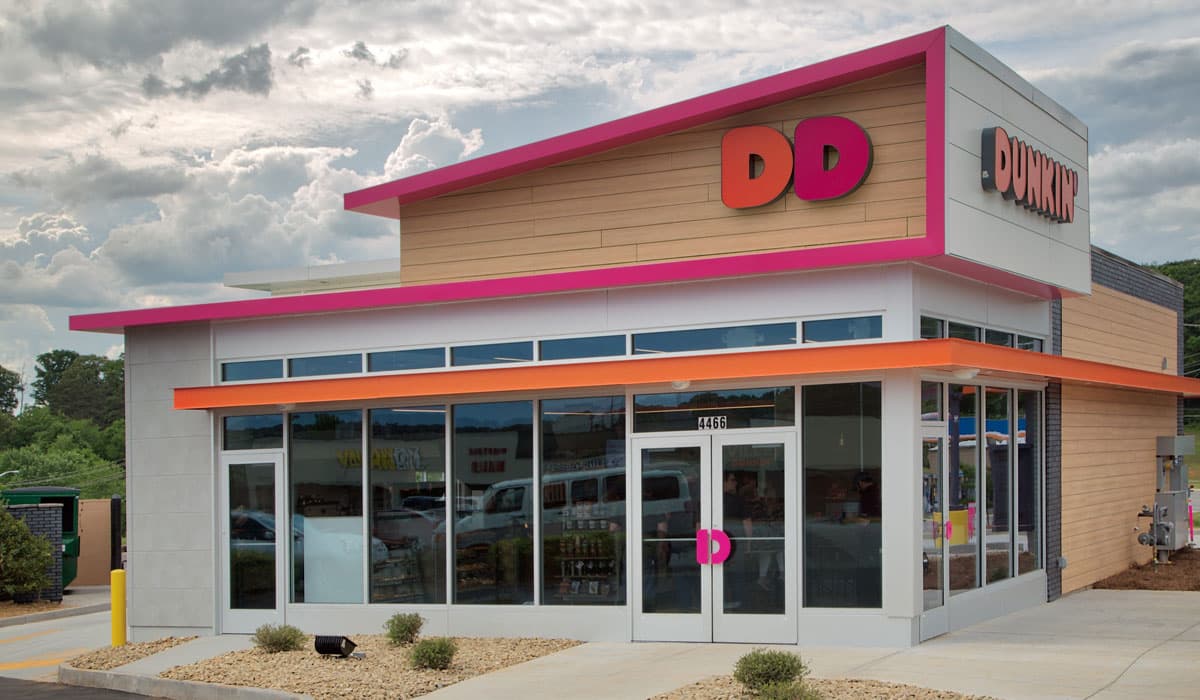Some brands are acting quicker than others in terms of reopening dining rooms.
Scott Murphy, president of Dunkin’ Americas, says Dunkin’ Brands is taking a conservative approach.
The chain said in its earnings call on April 30 that about 90 percent of the 9,637 domestic Dunkin’ locations and more than 90 percent of the 2,518 U.S. Baskin-Robbins locations were open for off-premises business. Roughly 1,000 units were closed at that point. Although Dunkin’ hasn’t publicly disclosed an updated figure yet, Murphy did note the number of closures has decreased since then.
As more states move forward with lifting mandates, Dunkin’ will reopen dining rooms at a handful of stores in June to see if it can provide a safe environment for employees and customers.
At those test stores, employees will speak with consumers as they leave to learn whether the dining room felt safe and to see what improvements can be made.
“It’s not easy because there’s some pretty big restrictions, whether it’s just the total percent of capacity you’re allowed to have, whether it’s the 6 feet you have to maintain, whether it’s what’s available with sanitizer,” Murphy says.
There’s a reason why Dunkin’ can afford to take a cautious approach, Murphy says. Entering the pandemic, Dunkin’ stores already had a strong off-premises business. Pre-COVID, 90 percent of the business was to-go. With the onset of the pandemic, the company has added curbside pickup to more than 1,000 locations and more than doubled its delivery footprint.
Seventy percent of units have a drive-thru; at those locations, 95 percent of transactions occur through that off-premises channel.
“It shows you that that’s an effective tool,” Murphy says. “That’s what consumers are preferring right now. It’s almost easier to deploy against one access point rather than the front counter or dine-in. I just think we’re able to capture a lot of the traffic that we need through that drive-thru.”
So for those already moving in that direction, it accelerated customer counts.
At stores with reopened dining rooms, Murphy says Dunkin’ will continue several safety measures it has implemented since the pandemic began. This includes enforcing social distancing requirements, requiring employees to wear gloves and masks, suspending its refill mug program, installing Plexiglas sneeze guards at the front counter, and sending infrared thermometers to operators to check employees’ health.
Locations will also place condiments behind the counter, keep front doors open with a doorstop to prevent customers from touching the door handle, and provide wipes for customers to use for sanitation or to protect against bathroom door handles.
“Everyone’s come out of the woodwork with new technologies, whether it’s some level of infrared light or ultraviolet light or some of the sanitation systems through the air conditioning venting systems,” Murphy says. “We’re not going all the way there yet, but we continue to listen to proposals from a lot of folks out there as to what is the best way to keep the restaurant clean.”
Before the pandemic, Dunkin’ worked heavily with franchisees to develop NextGen stores, a redesign that includes an eight-headed tap system, modern décor, front-counter bakery, efficient coffee line, and enhanced pick-up area.
Roughly 600 stores have completed remodels thus far, Murphy says. He believes everything that was put into the new design is applicable to COVID-19, which should set up Dunkin’ pretty well in the post-pandemic landscape.
“So it’s all about speed—it’s modern, it’s streamlined, and it’s got digital menu boards in the drive-thru,” Murphy says. “It’s got a much larger on-the-go pickup spot. But we’re actually looking at it and trying to COVID plus it, if you will. Maybe it’s even putting fewer seats in there or maybe it’s taking the on-the-go pickup station and moving that to the front of the store and cutting out a window so people don’t even have to come in the restaurant. They can just grab their food out of a cubby. So we’re trying to do version 2.0 with all the learnings from COVID.”
Going forward, Murphy says drive-thru and contactless payment will continue to play a significant role in operations.
Digital, however, will be the key in cultivating and enhancing the brand/consumer relationship.
“No one has a crystal ball,” Murphy says. “And so, if we have to change our marketing or our offers or our promotions or even our store hours, what better way to do it than through digital channels because they can be so targeted and customized one-to-one and localized as opposed to the old school TV commercials during Friends or Seinfeld. I think we’re going to be a lot more reliant on those digital channels and our loyalty program than we ever have.”
Murphy says the company’s supply chain hasn’t been affected despite recent news of plant closures across the country. The Dunkin’ executive says the brand has multiple suppliers for every product and there’s plenty of inventory on hand. Dunkin’ has a call every Wednesday with its suppliers to monitor the situation.





